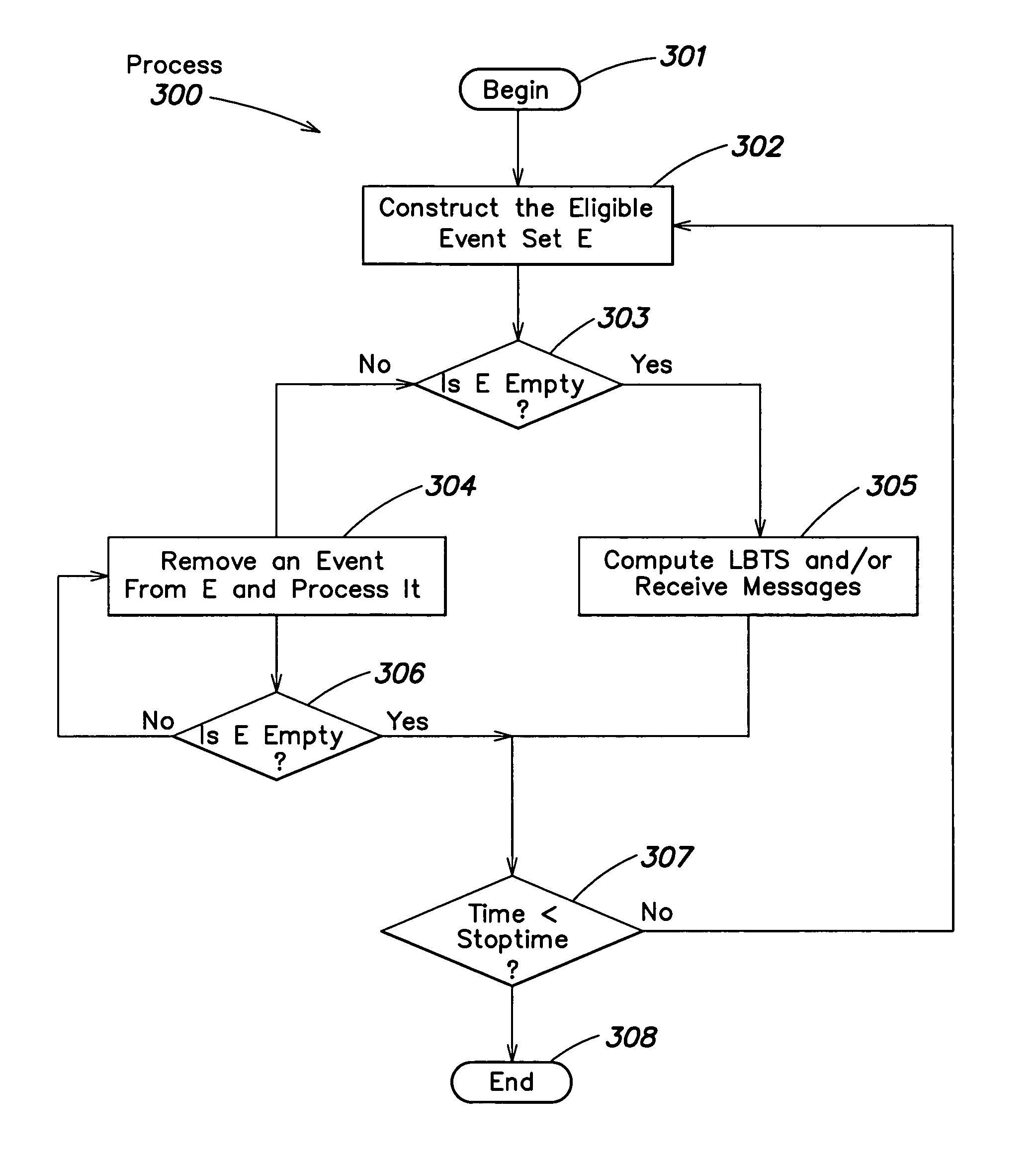Discrete event simulation system and method
a simulation system and event technology, applied in the field of simulation systems, can solve the problems of increasing the amount of memory required for simulation and the number of processing cycles, and the simulation is a very time-consuming process
- Summary
- Abstract
- Description
- Claims
- Application Information
AI Technical Summary
Benefits of technology
Problems solved by technology
Method used
Image
Examples
Embodiment Construction
[0037]All references referred to herein are incorporated by reference in their entirety.
[0038]According to one aspect of the invention, a lookback protocol is disclosed that provides another source of parallelism to increase simulation performance. Lookback can reduce the number of rollbacks in optimistic simulations, because a logical process may simply process an out-of-timestamp order event instead of rolling back other events. Lookback may also be used in conjunction with new conservative protocols, some of which may no longer depend on lookahead. As a result of implementing a lookback-based protocol in performing simulations, lookback-based conservative protocol execution time may be lower than the bound given by the critical times of events.
[0039]Generally, according to one aspect of the invention, lookback is defined as the ability of a logical process to execute out-of-timestamp order events, which are often referred to as stragglers, without impacting states of other logica...
PUM
 Login to View More
Login to View More Abstract
Description
Claims
Application Information
 Login to View More
Login to View More - R&D
- Intellectual Property
- Life Sciences
- Materials
- Tech Scout
- Unparalleled Data Quality
- Higher Quality Content
- 60% Fewer Hallucinations
Browse by: Latest US Patents, China's latest patents, Technical Efficacy Thesaurus, Application Domain, Technology Topic, Popular Technical Reports.
© 2025 PatSnap. All rights reserved.Legal|Privacy policy|Modern Slavery Act Transparency Statement|Sitemap|About US| Contact US: help@patsnap.com



